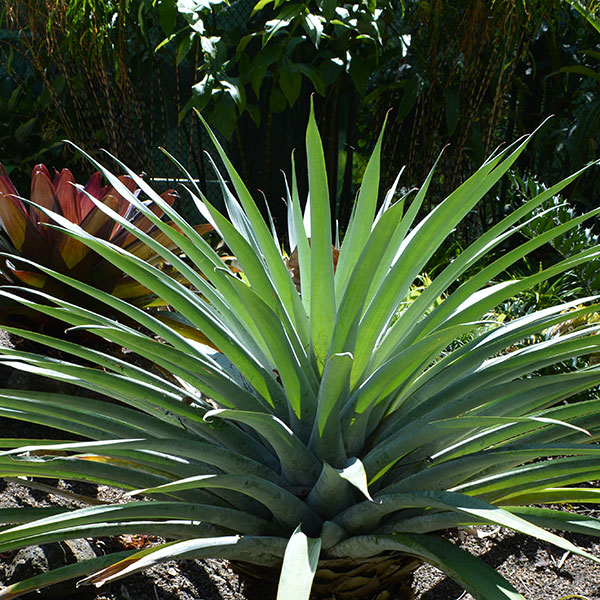The Fragrant Alcantarea

It is the flowers of Alcantarea odorata that have the fragrance, and these only appear on mature specimens, however with its size and attractive foliage it is a garden worthy plant.
One of the ‘Giant’ bromeliads, along with Alcantarea imperialis Rubra it one of the most popular with landscapers and collectors alike.
Suited to USDA Hardiness Zones 9a – 11 with protection in the cooler limit. This is a popular plant in parts of California as well as Florida also the Hawaiian Islands.
This one is regarded as drought tolerant, copes well with humidity and is suited to coastal conditions.
The foliage is a very attractive silvery grey, much narrower than A.imperialis. It can take 5 years for this species to flower in that time it will put on some offsets, and after flowering the mother plant dies.
How to Grow Alcantarea odorata
- Position
Full sun to part shade, best foliage colour will be with good sun. Protect from cold winds and a frost free position is essential. - Soil/Growing Medium
You could mount this plant on a good sized board, wall or a tree.
Being naturally a lithophyte, Alcantarea odorata requires a free draining soil and similarly a free draining potting mix.
An orchid potting mix suitable for cymbidium orchids is suitable.
In the ground, mound up the soil and add extra drainage material as needed. - Pots and containers will need to be large enough to cope with this plants eventual size. Look for a planter around 2ft (70cm) across as a minimum.
- Watering
Watering Alcantarea depends on the climate and the growing medium. With average rainfall little to no watering should be needed. As a rule, water well every 4 weeks during dry periods.
You can also mist spray if humidity is low.
Watering inside the rosette occasionally is recommended.
Never let the soil or growing medium become soggy. - Fertiliser
It is a misconception that these plants do not need fertiliser. They do in fact respond well to a little slow release fertiliser once a year and the occasional foliar spray.

